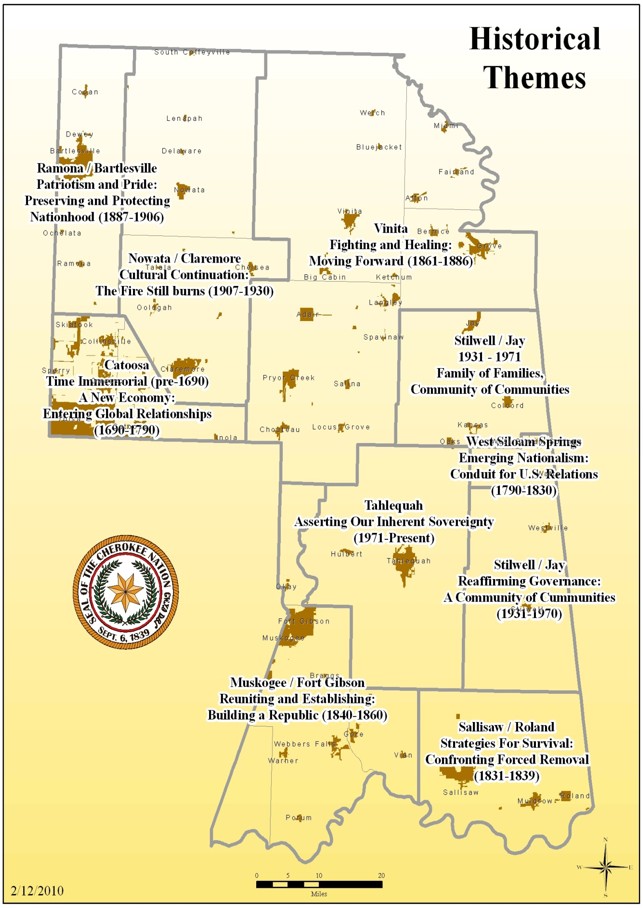Cherokee Nation Puts Its History on Display: <i>Casino Revenue Funds Heritage Acquisitions
- by Susan Halas

Cherokee Nation Historical Themes map.
By Susan Halas
Not all special collections are your garden variety university rare book rooms or museum archives.
Gina Olaya is Director of Tribal & Public Relations for Cherokee Nation Entertainment. For the past three years she has procured art and cultural heritage material on behalf of Cherokee Nation and its entities. Much of it goes on display in their casinos and other facilities owned by the sovereign tribe located in Northeastern Oklahoma. "Our purpose is to provide services to our citizens while preserving our history, culture, language and heritage."
"Chief Chad Smith has designated a cultural theme for each area of the Cherokee Nation," she said. "Each 'theme' relates to a specific period in the history of the Cherokee Nation as a people. All of the art/artifacts I purchase reflect this specific time in our history."
"For example, our tribe built a medical clinic in the Muskogee, Oklahoma area. The theme specific to that area is: "The Golden Age: Re-establishing a Republic and Re-uniting as a Nation 1840 – 1860." Therefore, the art and artifacts I purchased for that specific property were related to a time of rebuilding a strong Cherokee Nation. Visual representation includes landmark buildings such as courthouses, male and female seminaries and thriving agriculture, including a few plantation farms."
"Cherokee Nation is currently experiencing a huge growth in the number of clinics being built and the expansion of existing casino properties," she said. Though funds for acquisitions fluctuate, "I currently have a very healthy art procurement budget."
She also pointed out that "Cherokee Nation's Tribal Council passed a law in 2007 that requires any construction or renovation project $500,000 or more set aside 1% of the budget for the procurement of culturally appropriate art." Though contemporary artwork per se can only be procured from Cherokee Nation citizens, other kinds of antiquarian historical and cultural material can be obtained from other sources.
"My procurement process consists of sending out a Call for Art, which includes a written description of the cultural theme of the property, color pallets and a visual representation of all furniture, fixtures and equipment to be placed within the property. I mail this request to each artist I have in my database, as well as posting this 'bid' on www.cherokeebids.org and placing an ad in the Cherokee Phoenix, our tribal newspaper."
Olaya said collectors or dealers interested in selling or donating relevant art or artifacts to a tribal entity should conduct an internet search to secure contact information for a specific tribe. Then, simply call the main number and request to be transferred to the Chief's office. Almost everyone who works in that office should be able to redirect you to the person(s) who procure art or artifacts on behalf of that specific tribe.
AE Monthly writer Susan Halas welcomes your comments and suggestions. Reach her at halas@hawaii.rr.com